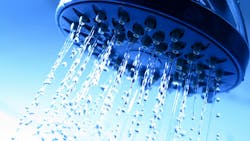The Unvarnished Truth: Water-Efficient Products are Popular
[Editor's note: this article appeared originally on Ripple Effect, the newsletter of Plumbing Manufacturers International. Reprinted with permission.]
You’ve most likely heard the statistics and reviews: 76% of Americans support the government setting appliance efficiency standards (Consumer Federation of America). “Even the simplest and least expensive showerheads can provide a satisfying shower” (Consumer Reports). Efficiency standards save the average American household $576 a year on their utility bills while cutting the nation’s energy consumption by 6.5% and water consumption by 12% (Department of Energy, Biden administration).
And there’s more: indoor household water use decreased 22% between 1999 and 2016 (Water Research Foundation). According to an article in Circle of Blue, this decline in water use—from 177 gallons to 138 gallons per household per day—is not due to a green wave of environmentalism or a significant change in how people used showers, toilets and faucets, according to William DeOreo, lead author of the study. The reason households are using less water: better equipment.
Happy Customers
This better equipment translates into happy customers. And that’s our ace in the hole: our water-efficient products are popular among our customers, no matter if the federal government likes our products or not. A quick look at the reviews of our water-efficient products marketed online demonstrates this truth.
“(The water savings) is almost all attributable to fixtures,” DeOreo told Circle of Blue, talking about toilets, faucets, showerheads, and other appliances. “It’s not like people’s habits changed. Better technology really drove the reduction. And there’s room for more improvement if we adopt the best technology out there today.” PMI’s own studies have demonstrated that replacing legacy fixtures with water-efficient ones can save tremendous amounts of water quickly.
As our industry enters into a new phase of deregulation, we must continue to make products that appeal to customers interested in saving water, energy and money and who are environmentally conscientious. Industry experts agree that most consumers will not be eager to swap out water-efficient fixtures for ones that will end up costing them and our planet more.
A survey by the Water Main found that most Americans (73%) believe there will be a shortage of fresh water in the foreseeable future, and 74% agree that more action needs to be taken to conserve water, according to a survey conducted by Suez Water Technologies and Solutions. Even though there’s been constant rain in the Northeast United States, significant drought persists in the West, according to the US Drought Monitor. More than 29% of the lower 48 states are experiencing drought conditions this summer.
On the Right Track
Will there be a market segment interested in inefficient products? Most likely. We know that there are already sellers of inefficient products out there, primarily on the internet and operating from locations outside the US. Will this dynamic make our counterfeit problem more challenging? Probably yes, because these sellers will try to convince customers that these inefficient products are manufactured by reputable brands.
Over time, we will see how this dynamic plays out. In the meantime, remember that we’re on the right track and should not be deterred. We make products that save water, energy, money, and carbon emissions. They achieve a high measure of satisfaction and popularity among our customers because they are reliable and safe.
The best thing for us to do right now is to get in touch with our customers, for they will be the final arbiters in our current debate. As Steve Jobs said, “Get closer than ever to your customers. So close, in fact, that you tell them what they need well before they realize it themselves.”
About the Author
Belinda Wise
Belinda Wise is a Board Member for Neoperl US, a manufacturer and distributor of plumbing components including faucet aerators, check valves and flow regulators.
